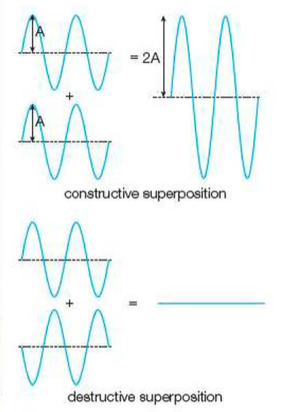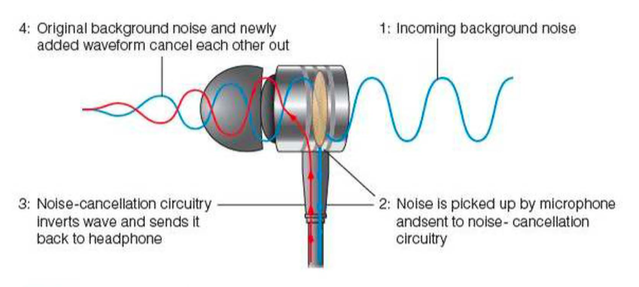Superposition
What you should know
⇒ The wavespeed equals its frequency multiplied by wavelength
⇒ Frequency of a wave is calculated by dividing 1 by T (the period of the wave)
⇒ The phase of a wave is the fraction of a cycle completed compared to its starting point in the cycle
⇒ Phase difference compares different points along the wave at the same time
⇒ In one cycle, waves travel a distance of one wavelength
⇒ The phase difference of two points that are one wavelength apart is 2π or 360 degrees
⇒ Waves diffract when they travel through small gaps
- The angle of diffraction is small when the wavelength is small in comparison to the gap's width, but diffraction is large when the wavelength is roughly the same same size as the size of the gap
Introduction
⇒ When two waves of the same type meet at the same point and overlap, the resultant diplacement of the oscillations is the vector sum of the displacements of each wave - this is called superposition
- For example, if you watch waves at the sea two small waves often superimpose when two wave peaks meet, and make a larger wave

⇒ This shows two water waves meeting in two circumstances. One shows two waves with the same amplitude (A) meeting in phase and the other shows two waves with the same amplitude meeting in antiphase.
- When the waves are in phase, the resultant amplitude is 2A
- When the waves are in antiphase, the resultant amplitude is zero
⇒ Wave superposition can be used to reduce unwanted noise

- Unwanted noise is received by a microphone and fed into noise cancellation circuitry
- This circuitry inverts the noise (i.e. changes its phase by 180 degrees) so that the original sound and the newly added waveform cancel each other out
Type of Wave
⇒ Superposition can occur between the same type of wave
⇒ Two water waves can superpose, but light and sound waves cannot superpose
Extra
⇒ Also see our notes on: